- Established 1982 -HOME: www.hiltonpond.org
THIS WEEK at HILTON POND Subscribe for free to our award-winning nature newsletter (Back to Preceding Week; on to Next Week) |
BIRDS OF EARLY MAY 2020 As the 2020 calendar was flipping from April to May, nearly all our migratory winter resident birds departed Hilton Pond Center. Just one of those species remained: White-throated Sparrow (WTSP). Except for two lingering WTSP, birds we observed or banded during the first two weeks of May were either year-round residents or Neotropical migrants; some of the latter were just passing through on their way toward breeding grounds much further north, while others will spend summer with us, nesting here or nearby. Banding numbers for the last two weeks in April--28 species and 69 individuals--were fairly close to what we just handled during May's first half: 29 species and 81 individuals. In the following installment we offer commentary about some of those early May birds, supplemented with facts we hope you'll find informative and useful.
All text, maps, charts & photos © Hilton Pond Center Our penultimate White-throated Sparrow (WTSP) of the season--banded on 3 May--got the attention of eBird's on-line database, which "red-flagged" it as outside the "normal" late limit for its species in the Carolina Piedmont. (Based on historical observations for a given region, eBird alerts observers about uncommon species and/or unusually late or early dates. Historically, any wintering WTSP seen in our area after 1 May is considered tardy at migrating back north, so we had to verify we had indeed encountered a "late" white-throated and not some other species.) We observed but didn't band another WTSP on 6 May; needless to say, eBird also red-flagged that report. (Our latest banding of a White-throated Sparrow at Hilton Pond Center was on 23 May 'way back in 2003, so we're certain that REALLY would have gotten eBird's attention!)
All text, maps, charts & photos © Hilton Pond Center Our 3 May 2020 WTSP was a bright morph individual (top photo) in which white head stripes were pristine and the yellow cere quite brilliant, while the final one on the 6th was a dull morph (just above). Despite common belief, intensity of color in White-throated Sparrows does not tell you much about the bird; i.e., a bright or dull free-flying individual can be male or female, or of any age (immature or adult).
All text, maps, charts & photos © Hilton Pond Center As those "late" White-throated Sparrows departed Hilton Pond Center, Neotropical migration that began in late April continued during the first half of May. New World Warblers trickled in, including a bunch of American Restarts (AMRE). Surprisingly, none of the seven AMRE were those Halloweenish adult males with jet black wings and body and bright orange tail spots and wing bars. All of them--four females (above) and three males (below)--were second-year birds with similar, much more subdued plumage.
All text, maps, charts & photos © Hilton Pond Center At fledging American Redstarts of either sex do indeed look pretty much alike, with olive gray blacks and yellowish tail spots, wing bars, and that distinctive "wingpit" marking on the upper flank. By the following spring, second-year male AMRE acquire varying degrees of black in the face and head (as above), while their yellow usually changes to more of a salmon color. (Some "advanced' second-year males look essentially like adults, with more or less olive feathers scattered among the black.) American Redstarts typically breed just north and west of Hilton Pond Center, although South Carolina's Breeding Bird Survey reports a few confirmed nesting records in the Sandhills Province EAST of us. This all suggests AMRE deserve more summertime attention in the Piedmont Province where the Center sits.
All text, maps, charts & photos © Hilton Pond Center Far more likely to be a local breeder at Hilton Pond Center is Common Yellowthroat (COYE), although we've yet to capture a recent fledgling or a female with a brood patch. This species nests statewide in South Carolina--not surprising since it is probably the only warbler that breeds in every state, plus much of Canada, and central Mexico. (In winter, most COYE go to Central America, although some hang back in coastal areas of the southeastern U.S. Our latest on record for the Center is 28 October.) Adult male COYE have a distinctive black mask, but both sexes have a bright yellow chin, throat, and upper breast that gives them their name. (The female above is a second-year bird caught this week; she's a much much paler yellow than she will be after her next molt.) Common Yellowthroat's generic epithet Geothlypis is from the Greek words for "ground" and "unidentified small bird," referring to the species' habit of secreting itself in low places with dense vegetation. There are eight other similar-looking New World Geothlypis congeners called "yellowthroats"; oddly, the genus now also includes three other less-similar warblers: MacGillivrays', Mourning, and Kentucky.
All text, maps, charts & photos © Hilton Pond Center Despite being so colorful they are often called "butterflies of the bird world," some members of the Wood Warbler Family (Parulidae) are much more drab than Common Yellowthroats and American Redstarts. In particular are the four "brown warblers": Ovenbird, Northern Waterthrush (NOWA), Louisiana Waterthrush (LOWA), and Swainson's Warbler (SWWA). We've captured all four of these at Hilton Pond Center, with Swainson's being so rarely encountered in the Upper Piedmont of South Carolina that two we banded in May 2000 warranted special mention in regional and national publications. (SWWA nest elsewhere in the state, especially in coastal swamps and in the Mountain Province.) Conversely, Ovenbirds and Louisiana Waterthrushes DO breed in the Piedmont. Although we have not found evidence for the former at the Center, we have banded fledgling LOWA here, as well as females with brood patches. The fourth species, Northern Waterthrush (above), occurs locally only during migration, appearing mid-April through late May and returning for a few weeks in August and September. Although the two waterthrushes cause identification problems for some observers, look for a streaked throat and a usually buffy superciliary line (above the eye) in the somewhat smaller NOWA. A thicker superciliary line and throat are white in the bigger, chunkier Louisiana Waterthrush.
All text, maps, charts & photos © Hilton Pond Center If you've ever wondered why waterthrushes are called that, it's because they hang around wet areas like streams and pond margins AND resemble a six-bird group we call the "spot-breasted thrushes." Members of this assemblage--all of which are larger than waterthrushes--have more or less brown backs and show some degree of dark streaking or spotting on their undersides. Included are Veery, Hermit Thrush, Wood Thrush, Gray-cheeked Thrush, Bicknell's Thrush, and Swainson's Thrush (SWTH, above). Of these, Hermit Thrush occurs in winter at Hilton Pond Center, Wood Thrush has bred locally, and the rest occur only in migration. All are in the Thrush Family (Turdidae), along with bluebirds and American Robin, among others. We've never encountered a Bicknell's at the Center but SWTH is the most abundant of the rest of the group with 551 banded--our 20th most common species since 1982. We'll not describe all the spot-breasted thrushes, but Swainson's Thrush, as shown above, is usually easy to separate out because of its buffy face and prominent eye ring in conjunction with prominent vertical breast streaking and absence of any rusty coloration on head or tail. Upon examination, there's really no comparison between any of these true thrushes and the Northern Waterthrush discussed previously.
All text, maps, charts & photos © Hilton Pond Center It was entirely coincidental this week to capture yet another brown and spot-breasted bird besides the waterthrush and Swainson's Thrush--that being a Brown Thrasher (BRTH, above). With us all year in small numbers, these songsters--confusingly enough--are in the Mimic Thrush Family (Mimidae) and totally unrelated to the other two spotted brown species just mentioned. Of all these birds, the BRTH is biggest of all at ten inches in length. Along with overall size, three other characters differentiate Brown Thrashers from thrushes and waterthrushes: A bright yellow iris (pale brownish-yellow in fledglings); a long, somewhat decurved bill; and a very long tail. Note also the overall cinnamon color of the dorsum and the dark brown streaking on chest, belly, and flank. The thrasher we caught this week was a female with a very edematous brood patch, indicating she was either incubating eggs or keeping nestlings warm. In the early 1990s we banded 30-60 BRTH each year, but with the loss of shrubby habitat that became woodland we see many fewer--an average of less than three per annum in the past decade. (We suspect many thrashers also fell victim to West Nile Virus.)
All text, maps, charts & photos © Hilton Pond Center As a member of the Mimic Thrush Family, the Brown Thrasher does indeed exhibit aptitude for imitating sounds of other birds. Of course, its close family relative--Northern Mockingbird (NOMO)--is the champion imitator at Hilton Pond, singing loudly and lustily from rooftops and power poles 'round the clock during breeding season. We have banded many fewer NOMO (180) compared to thrashers (512), likely because our habitat is somehow not to their liking. We did catch a mocker during the first half of May--a male with an obvious cloacal protuberance in which sperm was temporarily stored. Northern Mockingbirds repeat song elements many times over, Brown Thrashers sing in doubles, and Gray Catbirds (GRCA, below)--the third Mimic Thrush we host at the Center--don't repeat anything.
All text, maps, charts & photos © Hilton Pond Center Let us summarize our unforgettable hint for telling the mimics apart: Mockingbird Many repetitions; Brown Thrasher Binary phrasing; and Catbird Continuously Changing. (Incidentally, since we banded all these species during May's first fortnight, we can lay claim to scoring the "Mimic Thrush Trifecta"--something we haven't done often.) We should mention Brown Thrashers and Northern Mockingbirds are year-round residents at Hilton Pond Center, although it plausible in winter we host some of each from further north. Conversely, ALL our Gray Catbirds are Neotropical migrants that arrive each spring and depart come autumn.
All text, maps, charts & photos © Hilton Pond Center The Center's first Red-eyed Vireo (REVI) of the spring was observed on 7 May, more than a month behind our earliest White-eyed Vireo. Both birds are well-named, although second-year REVI often have eyes that are brownish-red with a milk-red rim, as shown above. By the following year this iris will appear more crystalline, and the milkiness usually will have disappeared. (Precise REVI eye color is sometimes visible through binoculars, allowing in-the-field ageing.) Red-eyed Vireos--thought by some ornithologists to be the most common bird in eastern North America's deciduous forests--are true-long distance migrants that fly all the way to the Amazon basin to spend our winter. We've not found a REVI nest at Hilton Pond but have banded females with active brood patches that imply local nesting. Sexes are monomorphic in Red-eyed Vireos but occasionally can be separated via wing chord measure; anything above 82mm is a male, less than 75 is female. (Birds that fall between those measures are sexed as "unknown sex." The birds know, but the bander does not.)
All text, maps, charts & photos © Hilton Pond Center Indigo Buntings (INBU) continue to appear at the Center's feeders, and to get snared in mist net mesh. We banded seven during the first half of May--five females and two males--and all were second-year individuals fledged last year. The two males were what we call "calico" birds (above), with a mix of the blues of a full adult and the browns of an immature. Observers sometimes confuse these calico buntings with Blue Grosbeaks (which have rusty wing bars) or even Lazuli Buntings (the western counterpart of Indigo Buntings). By their third year, calico INBU will have replaced any brown plumage with that nearly indescribable mix of many blues. Indigo Buntings breed across the U.S. east of the Rockies and winter primarily in Central America and southern Mexico.
All text, maps, charts & photos © Hilton Pond Center And speaking of birds that are blue, around the Hilton Pond property we've erected a couple of dozen nest boxes with holes of various sizes; we check them regularly to see who might have taken up residence. We often observe parent birds tending to nest duties, and when feasible we band nestlings prior to fledging. Most years we have two or three resident Eastern Bluebirds (EABL) pairs--all of which are banded--so we were quite surprised on 14 May to mist net THREE unbanded adult EABL, including a blue-orange-white male (above) with a prominent cloacal protuberance, and two females with well-developed brood patches. These birds had to be nesting nearby, but where if not in our painstakingly prepared nest boxes? We couldn't know for sure, but the likely answer is they had utilized natural cavities--perhaps old woodpecker holes excavated high up in hardwood trees on neighboring land. Why they were suddenly attracted to the Center and got caught is anyone's guess.
All text, maps, charts & photos © Hilton Pond Center One can hardly argue that multi-hued Indigo Buntings and tricolored Eastern Bluebirds are among the most colorful spring migrants we banded during the first half of May, but even they drew stiff competition from two other migrant birds we handled. First into the mist nets on the 7th was a male Summer Tanager (SUTA, above). We knew immediately he was a second-year bird because, like the bunting, he was also "calico"--a hodge-podge of yellow juvenal feathers and the crimson of an adult. (Some second-year SUTA and all after-second-year males are completely red. Female SUTA are typically solid yellow no matter their age, with older individuals sometimes acquiring a reddish or orange wash, especially on undertail coverts. Females never appear "calico.") Big-billed Summer Tanagers have a more or less southerly breeding distribution, ranging as far north as southern Ohio and into the southwestern U.S. and northern Mexico after spending cold months mostly in Central America. Since we've captured female SUTA with brood patches, they undoubtedly nest at or near Hilton Pond Center.
All text, maps, charts & photos © Hilton Pond Center After banding the second-year Summer Tanager we went out to the back deck of the Center's old farmhouse to release him, when what to our wondering ears should appear but something in the treetops that sounded like an American Robin singing with a hoarse voice. Lifting our gaze into the canopy, we strained to see if we were correct in analyzing the call and, sure enough, for a moment on a bare branch (above) a bright red bird with contrasting black wings came into view. It was unquestionably an adult male Scarlet Tanager (SCTA). How fortuitous to have a SUTA in-hand while watching a SCTA overhead, and how cool it would be to capture the latter and be able to band both eastern tanagers in one day.
All text, maps, charts & photos © Hilton Pond Center After releasing the Summer Tanager, we returned to our computer desk overlooking Hilton Pond--all the while listening to that raspy robin-like song outside and above our window. A few minutes later we looked out to see the Scarlet Tanager (above) at one of our bird baths and then watched as it flew low and directly into a mist net. It took only a second for us to zip out the back door, down the deck steps, and into the net lane where the SCTA was waiting. He came out of the net with ease, posing calmly as we fired off numerous camera exposures. Amazing on the wing, up close the contrasting colors of this bird were undeniably breathtaking. Scarlet Tanagers--124 banded locally in 39 years--are less common at the Center than Summer Tanagers (199 banded), and only occur for a few short weeks during spring and fall migration. After spending our winter in South America, the vast majority of SCTA pass through on their way to breed in the northeastern or midwestern U.S. Although there are nesting records for the Sandhills and Upper Piedmont Regions of South Carolina, we have no summer sightings of Scarlet Tanagers for Hilton Pond. This is apparently another of those species that deserves further attention during breeding bird surveys.
All text, maps, charts & photos © Hilton Pond Center We often celebrate holidays at Hilton Pond Center in ways a little bit different. The Fifth of May 2020 was no exception as we observed Cinco de Mayo with "liberation" of a sizable brood of Wood Ducklings. On this date FIVE little web-footers would have been appropriate, but the mama duck outdid herself this year when three times that--15 ducklings!. They bailed unassisted from their nest box sometime before dawn for a first outing on our one-acre laguna. Wood Ducks (WODU) breed throughout the eastern half of North America and also in the Pacific Northwest, historically using natural tree cavities as high as 60 feet above the ground. In recent decades, efforts to increase WODU numbers have led hunters and nature lovers to erect wooden boxes four times the size of a standard bluebird house to entice woodies to nest locally. On the 5th the WODU hen was so skittish we weren't able to get within good camera range, but telephoto shots (above) from the near side of the pond showed her cruising with her substantial brood, gliding in and out of overhanging vegetation and past their former nest box home. (We actually couldn't even get an accurate count for the fast-paddling fluffy flock until we processed and enlarged our photos! If you've ever wondered about the origin of that expression "getting your ducks in a row," just take another look at our photo of the pond!) Later that evening there were no signs of the adult Wood Duck and her newly fledged offspring, so they may have been hiding along the pond margin. Next morning she was again plying the waters of Hilton Pond, but there were only ten ducklings, and the day after that the number was down to five. It's hard to know exactly what happened to missing members of the brood. It's possible a few adventuresome ducklings simply wandered away, as apparently happened several years ago with the one in our photo above right.
All text, maps, charts & photos © Hilton Pond Center Of course, not all birds are such prolific egg-layers as Wood Ducks. It's likely that every hummingbird species produces a nest with just two, and most songbirds lay half a half-dozen or fewer eggs per clutch. (A notably industrious pair of Carolina Chickadees fledged seven young this spring from a nest box we provided.) As far as we can tell, Hilton Pond Center is currently home to just one pair of White-breasted Nuthatches (WBNU), a cavity-nesting species that can have a clutch size between five and ten--with a remarkably high average of eight. As shown above, young White-breasted Nuthatches have gray faces instead of white like their older parents. You'll also note this particular fledgling has a grayish cap; among adult WBNU, males (photo above right) have caps of jet black but those of females are usually more gray. The two youngsters this week were the first recently fledged White-breasted Nuthatches we have handled--a mere 29 WBNU have been banded at the Center since 1982--so we're uncertain whether the gray caps of these immatures will darken as they develop adult plumage.
All text, maps, charts & photos © Hilton Pond Center It was no surprise White-breasted Nuthatch offspring were already fledging in early May--even as many Neotropical migrants were just beginning to arrive at Hilton Pond Center. As year-round resident cavity nesters, WBNU have the dual advantage of not having to migrate AND of securing their eggs and chicks in an enclosure protected from vagaries of cold or wet weather. Both attributes allow local nuthatches to get an early start on the breeding season.
All text, maps, charts & photos © Hilton Pond Center Although they're not cavity nesters, House Finches (HOFI, above) are also year-round residents at Hilton Pond Center; they likewise got off to an early start at making more offspring. Young HOFI seem especially adept at begging from the parents; it wasn't uncommon during early May to see up to five fledglings frantically fluttering their wings, as above, and demanding sunflower seed bits just retrieved from a feeder by mom or dad. In our photo above, the male parent shows his red, a color absent in adult females (except for occasional pink spots on the rump). Young House Finches of either sex are brown, so one cannot safely tell fledgling HOFI gender by plumage until about October of the first year. (Note in our photo the feathery "horns" on the young HOFI; the actual function is not known for this trait, common among recently fledged House Finches; we hypothesize it may signal a bird's tender age to adults and enhance success of begging behavior.)
All text, maps, charts & photos © Hilton Pond Center Chickadee Follow-up: In the immediate past installment we described banding seven nestling Carolina Chickadees (CACH) on 29 April 2020 in a box at the end of the driveway at Hilton Pond Center. They all fledged and we know at least three have been flying about locally because of their recapture in mist nets on 9 May. Two of them were caught together in the same net with CACH #2710-22691, an adult male we banded locally as a recent fledgling himself--'way back on 3 June 2014. Now a remarkable seven years old, we suspect he has bred at the Center every year since and that he is father of the fledglings from the driveway box. (In the photo above, we're pretty certain that's the old guy at right getting ready to stuff even more suet into the mouth of his begging offspring. Note the younger bird's yellow gape, which serves as a highly visible target zone for food delivery from avian parents.)
All text, maps, charts & photos © Hilton Pond Center Hummingbird Assessment: The spring of 2020 continues to be a "slow" season for Ruby-throated Hummingbirds (RTHU) at Hilton Pond. Through 15 May we caught just four new RTHU (two of each sex) and recaptured six individuals banded locally in years past (only one was male, above). Even so, 2020 is NOT an unusual year; in 37 seasons of research since 1984 our average number of new RTHU bandings by 15 May is only eight, although in 2015 we had a record high of 36 by that date. The next year--when we ended up smashing our annual total for RTHU with 378--we had handled only five new individuals at the Center by mid-May. The moral of the story: Don't be alarmed if you have few hummers at this point in the year. It's "normal." Keep your feeders fresh and your nectar plants abundant and the number of Ruby-throated Hummingbirds at your place is bound to increase as the season progresses. So that's it, our portfolio of Hilton Pond birds for early May 2020. Just one winter resident species lagged before flying north just as lots of Neotropical migrants were coming in from Central and South America. Year-round residents got a breeding head start over the newcomers, and several species had even fledged young by mid-month. It's likely other migrants have yet to arrive, but for now we hope you've enjoyed our account of what we documented at the Center during a bustling two weeks in early May. All text, maps, charts & photos © Hilton Pond Center SPRING FUNDRAISER At Hilton Pond Center we were excited on 2 April 2020 to band our 70,000th bird since 1982. Some of you have already helped mark that significant milestone with a donation supporting our initiatives in environmental education, field research, and resource conservation. Now, with the loss in mid-April of our massive Southern Red Oak, including collateral damage to other vegetation To help us get past these latest stumbling blocks, please consider making a donation through Facebook at the link above. You can also donate via PayPal, at Network for Good, or through the Center's new Venmo account. Personal checks can be sent to 1432 DeVinney Road, York SC 29745. Since we're a non-profit, all gifts should be fully tax-deductible. Thanks for whatever assistance you can provide as Hilton Pond Center buckles down and continues to move forward as the most active year-round bird banding station in the Carolinas. All text, maps, charts & photos © Hilton Pond Center BIRD BANDING VIDEO For the past 18 springs we've been away from Hilton Pond and at the New River Birding and Nature Festival in Fayette County WV. The video is now available via YouTube on our new channel for Hilton Pond Center for Piedmont Natural History (please subscribe). Hope to see you "there" as part of this year's on-line Festival. (P.S. The video is a great learning opportunity for home-learning for young people sheltering in place with family.) All text, maps, charts & photos © Hilton Pond Center
Checks also can be sent to Hilton Pond Center at: All contributions are tax-deductible on your Don't forget to scroll down for Nature Notes & Photos, |
|---|
|
"This Week at Hilton Pond" is written and photographed by Bill Hilton Jr., executive director of Hilton Pond Center for Piedmont Natural History
|
|
|
Please refer "This Week at Hilton Pond" to others by clicking on this button: |
|



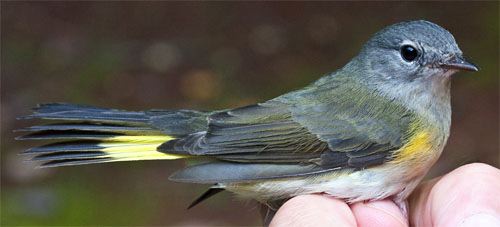

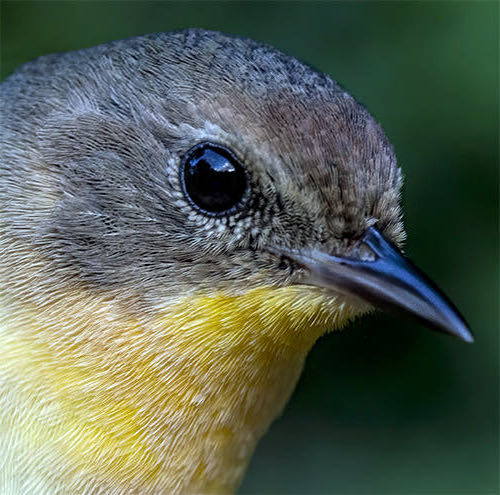
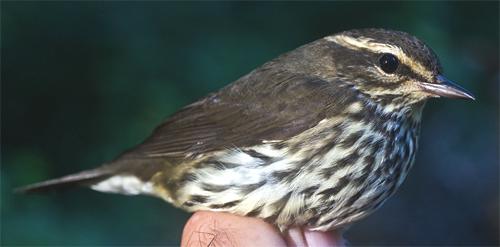
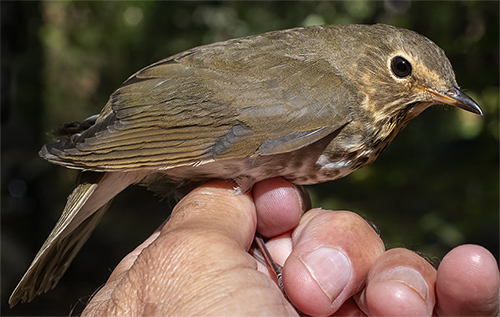

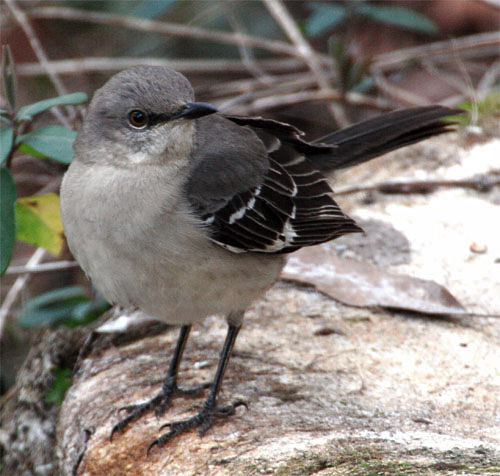


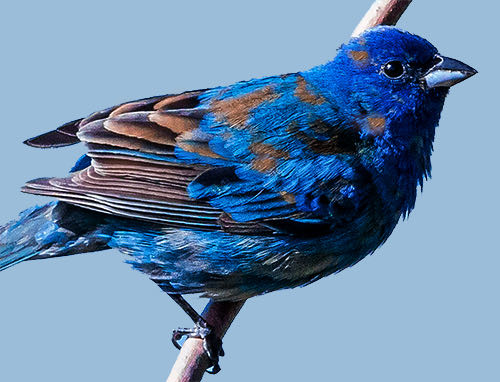

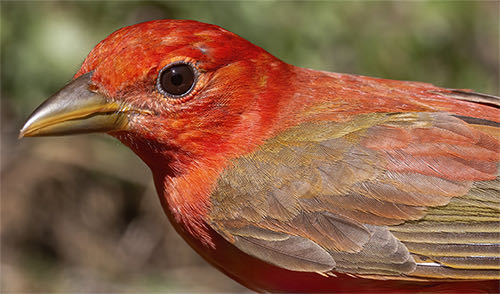
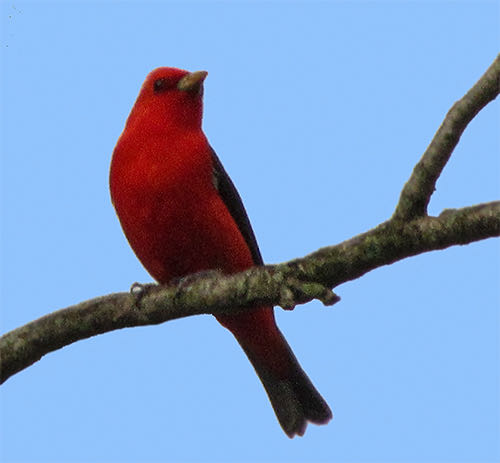
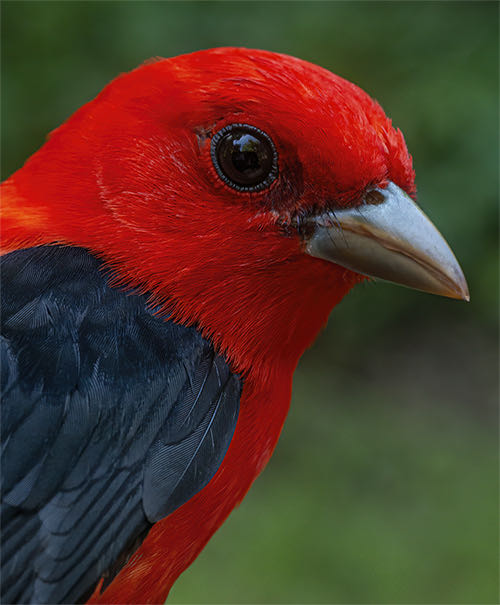
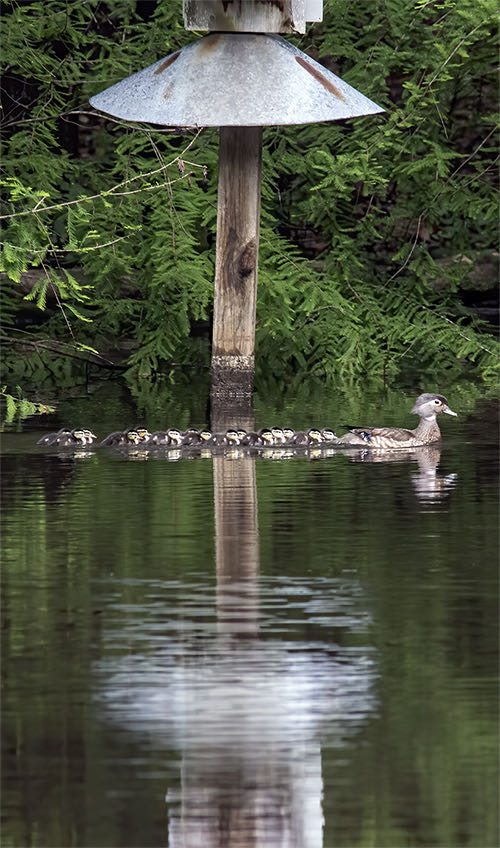
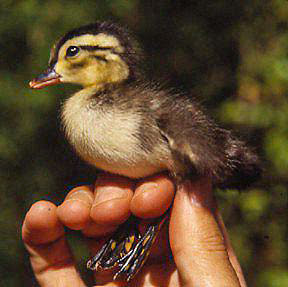
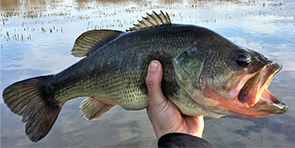 It's more likely one of our resident Eastern Snapping Turtles came up from the depths of the pond and dragged them under, or even that our local Barred Owl pair swooped and snatched ducklings from the water's surface under cover of darkness, acquiring food for their owlets.
It's more likely one of our resident Eastern Snapping Turtles came up from the depths of the pond and dragged them under, or even that our local Barred Owl pair swooped and snatched ducklings from the water's surface under cover of darkness, acquiring food for their owlets. 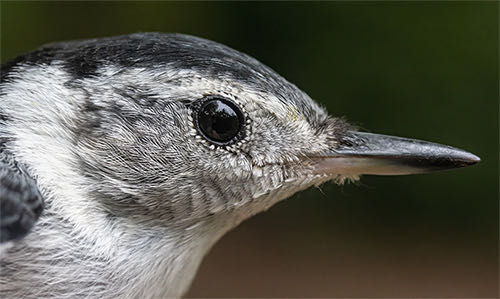
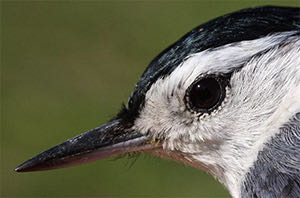 We're not sure how well our local pair did this year, but we did manage to mist net two very recent WBNU fledglings
We're not sure how well our local pair did this year, but we did manage to mist net two very recent WBNU fledglings 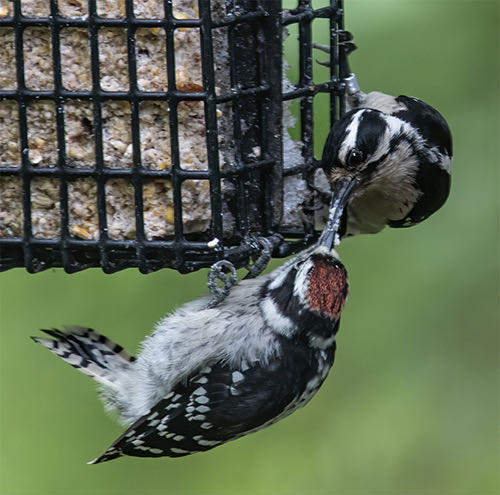
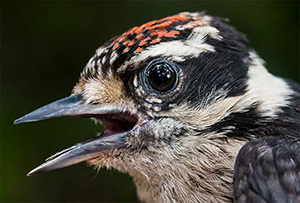 Same is true of a banded female
Same is true of a banded female 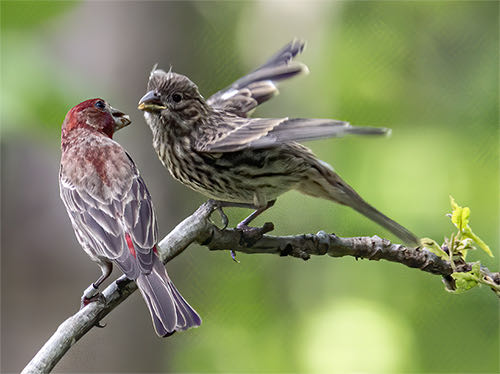
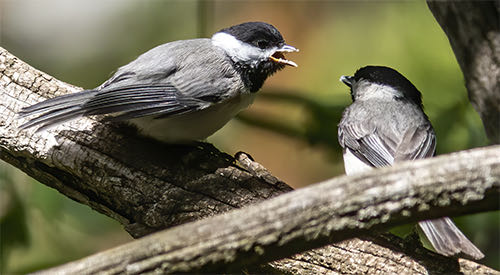
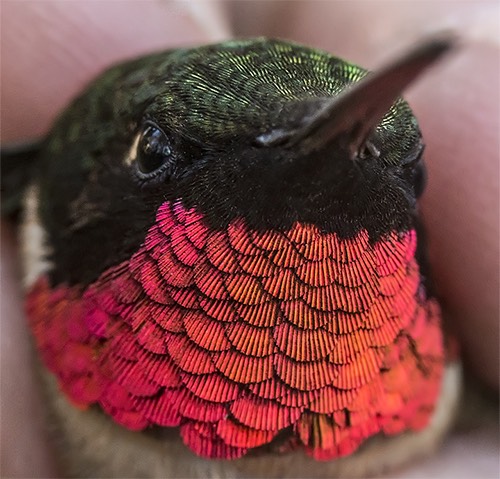
 and destruction of mist nets--plus the demise of a 35-year-old lawn tractor used to maintain our trails--a
and destruction of mist nets--plus the demise of a 35-year-old lawn tractor used to maintain our trails--a 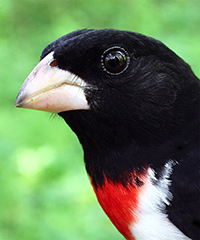 There we lecture, guide, and conduct bird banding workshops for enthusiastic participants from across North America. This year, because of the pandemic, the week-long Festival was canceled and organizers asked us to be part of a virtual Festival instead. On 27 April 2020 we were honored to have the kick-off lecture slot--a 35-minute video of a nature walk and bird banding demo here at the
There we lecture, guide, and conduct bird banding workshops for enthusiastic participants from across North America. This year, because of the pandemic, the week-long Festival was canceled and organizers asked us to be part of a virtual Festival instead. On 27 April 2020 we were honored to have the kick-off lecture slot--a 35-minute video of a nature walk and bird banding demo here at the 









 Please report your
Please report your